Goodness, gracious me. Just eleven weeks until we open for the annual Taranaki Garden Festival. Well, ten weeks and five days to be precise. October 29 is D-Day.
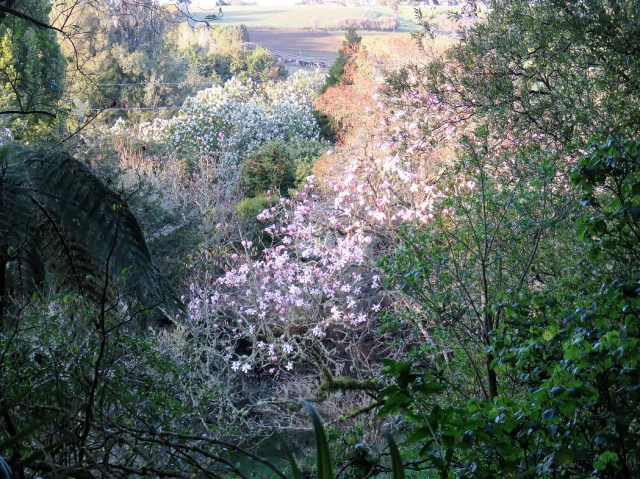
I am not starting to panic. No sirree. The advent of an extra pair of skilled and motivated hands in the form of our Zach has taken away the pressure I felt last year. Though last year, as I was getting stressed by how much I wanted to get done, we had no idea that Covid and the difficulty of overseas travel would result in the biggest festival ever for us. We had three times the number of people we were expecting. It was fine. Our garden is large enough to absorb a lot of people without it feeling crowded. It is just a challenge as far parking and toilet facilities go. The poocalypse was memorable.
This year is shaping up to be another boomer of a festival, if early bookings and programme requests are anything to go by. It is not that we can’t travel overseas from NZ. We are not like Australia where they have to request permission giving sufficiently important reasons to be allowed to travel offshore. We can leave. It is getting back into the country that is the barrier – trying to book a place in MIQ (as we call our managed quarantine programme for almost everybody entering the country) is so difficult that few people want to risk it. And even more of us don’t want to travel overseas at this time. NZ seems a very safe haven. There is always the risk of Delta getting in but so far so good. I will be really miffed, though, if we get an outbreak just before the festival…. It is already disappointing enough that Covid in the community in Australia will probably keep that travel bubble closed, making it impossible for any Australians to cross the Tasman this spring.
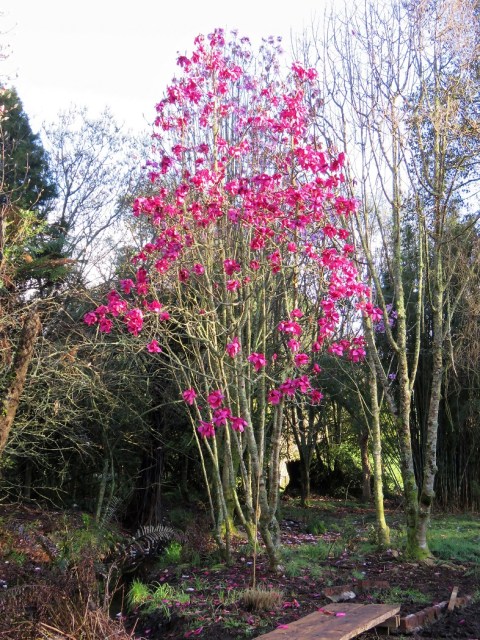
We have never been so well prepared this far in advance. Ten weeks and we have broken the back of the major preparation work. We just need four weeks at the end to do the final round of presentation so all seems well in hand at this time.
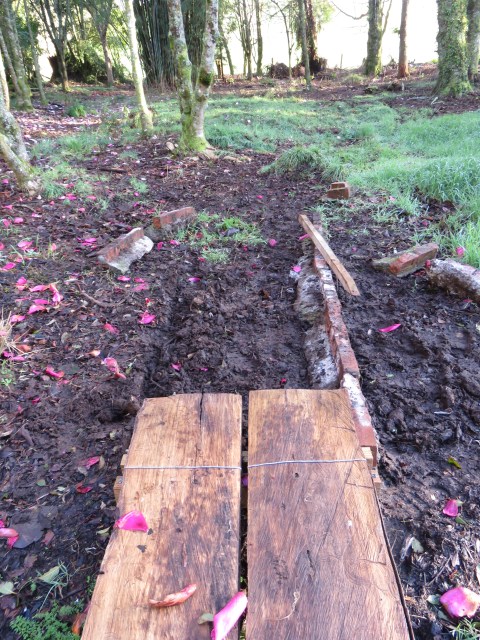
Lloyd has built the last bridge essential for access around the new Wild North garden. He has had to make this one higher because the ground is boggy beneath so is now constructing some all-weather access to it. Because we live rurally on a reasonably large property, we have room to store materials that we may need one day. Who knew that the brick and concrete edging to a garden bed we dismantled some years ago would be just the ticket for retaining the edges of the access paths? We will have to buy in some pit metal, though, to get a safe surface to that area of path.
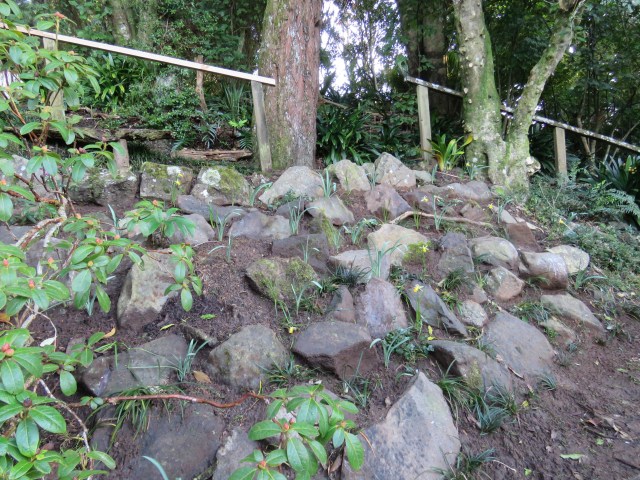
Zach was pleased to find a stack of big rocks to build his accidental rockery on the steep zig-zag path down to the park. I say an accidental rockery because he really only started by trying to retain the soil on the steep bank so it didn’t scour out and wash down onto the path below in heavy rains. It was part-way through that it became clear that he was actually constructing a semi-shaded rockery. I found him assorted suitable plants to fill it – the Australian native Veronica perfoliata, trilliums, snowdrops, Mark’s arisaema hybrids, little narcissi – to add to the Solomon Seal and green mondo grass that are already doing an excellent job of holding the soil.

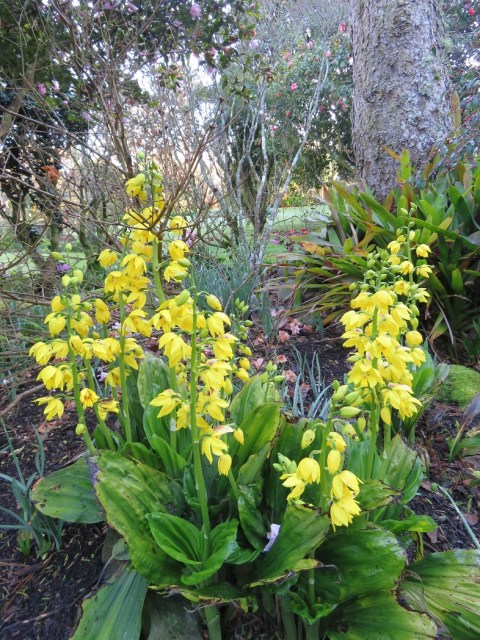
It is a lovely time of year, despite winter’s last gasps and storm fronts. Where I am working on the margins of the Avenue Garden, the calanthe orchids are at their charming peak. In fact, everywhere I look, there are spring flowers out and a whole lot more in bud. We are on the cusp of peak magnolia season. Mark is spending many hours doing his circuits of his magnolia and michelia seedlings to assess performance.
We are busy but on track. And oh my, I couldn’t think of a lovelier place to be busy.
A reminder about our Festival workshops:

There is a whole lot more to meadows and wild gardens than just letting plants grow. It takes a shift in thinking, a fresh view and different approaches to managing the garden. They are less demanding on maintenance but they still require management. “Tidying nature”, Mark is fond of saying.
We have spent a lot of time considering the less environmentally friendly aspects of domestic gardening – the use of nitrogen fertilisers, sprays to manage weeds, pests and fungi, the costs both financially and environmentally of achieving top quality lawns, meeting human expectations of tidiness and order, let alone the use of internal combustion engines like the lawnmower, hedge trimmer, weed-eater, chainsaw, rotary hoe and more.
We want our garden to be lower maintenance so it is sustainable into the future, more environmentally friendly yet still be beautiful to our eyes. It is why we have moved some areas of the garden to being managed meadows. Added to that, this year we are opening the new four acre Wild North Garden. I say new, but work started on it thirty years ago when Mark began planting up his father’s old cow paddock. Only now do we have it to the point where we are happy for others to see it, a new area of much looser maintenance with a wilder, more romantic feel to it.
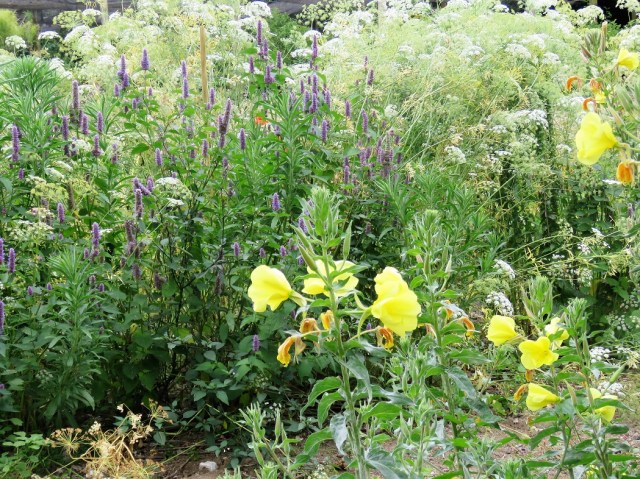
My workshop this festival is entitled ‘A Gentler Way to Garden’ but it could be sub-titled ‘Lowering our garden carbon hoofprint’. If you are interested in walking more gently on the land but still creating a beautiful garden that can make your heart sing, you are very welcome to join this workshop on Sunday 31 October. You do, however, need to book. Details are here.
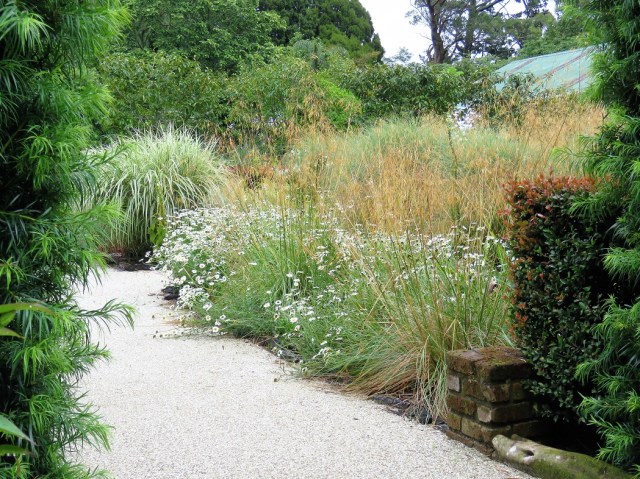
The other workshop we are offering is ‘New Directions with Sunny Perennials’. It all started with our desire for summer colour here, masses of summer colour when our extensive woodlands are largely restful green. We have had a fairly close look at contemporary trends in gardening particularly in the UK but also parts of Europe – alas not quite as close as it would have been had we been able to make our most recent trip in July last year. But over several years, we have distilled our learning, so to speak, and experimented and trialled to come up with summer gardens that work in our situation and the NZ climate.
This is the same workshop that many people missed out on last year (numbers are restricted) but with the benefit of another year of experience in handling these styles of perennial gardening. We are offering it twice, Monday 1 and Saturday 6 November, as part of the Taranaki Garden Festival. More details and booking here.
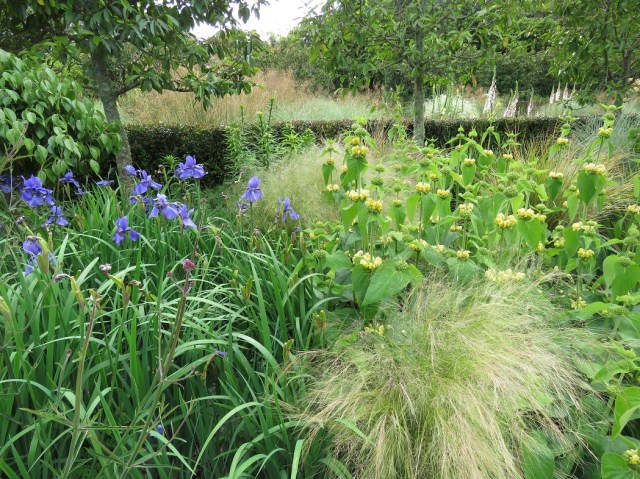


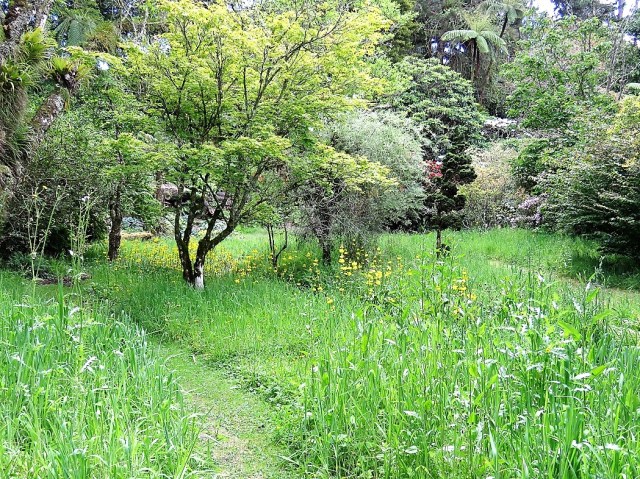
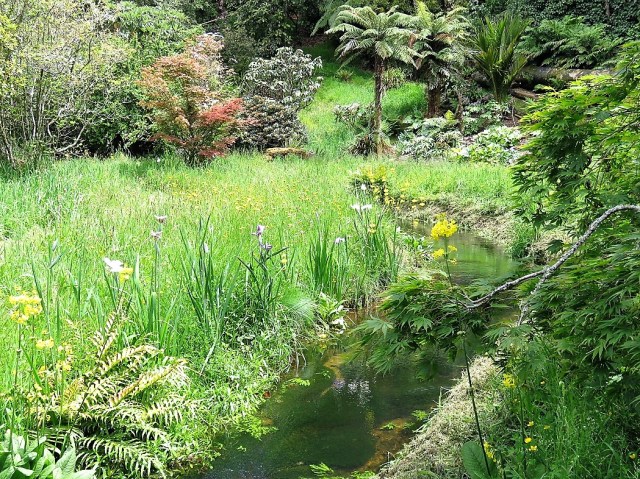
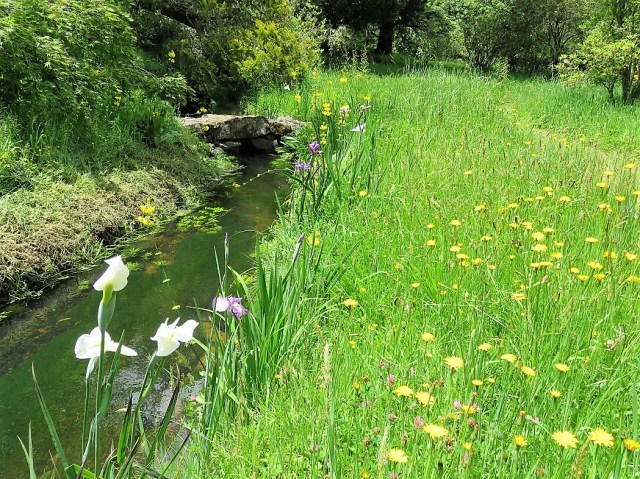
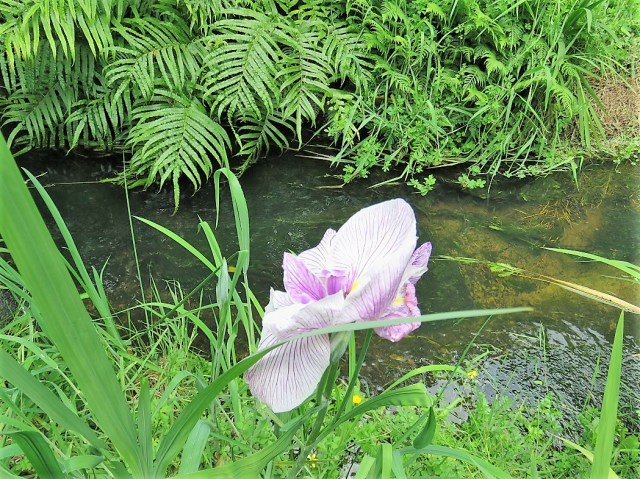
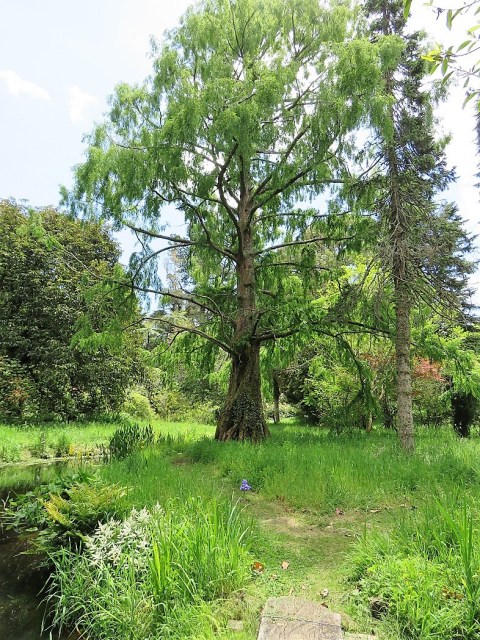
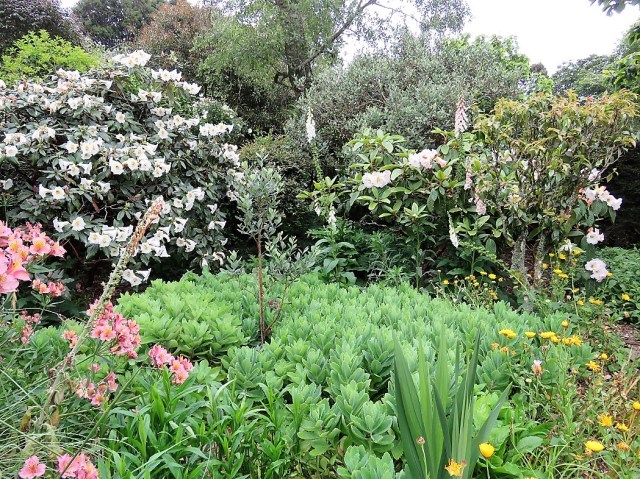
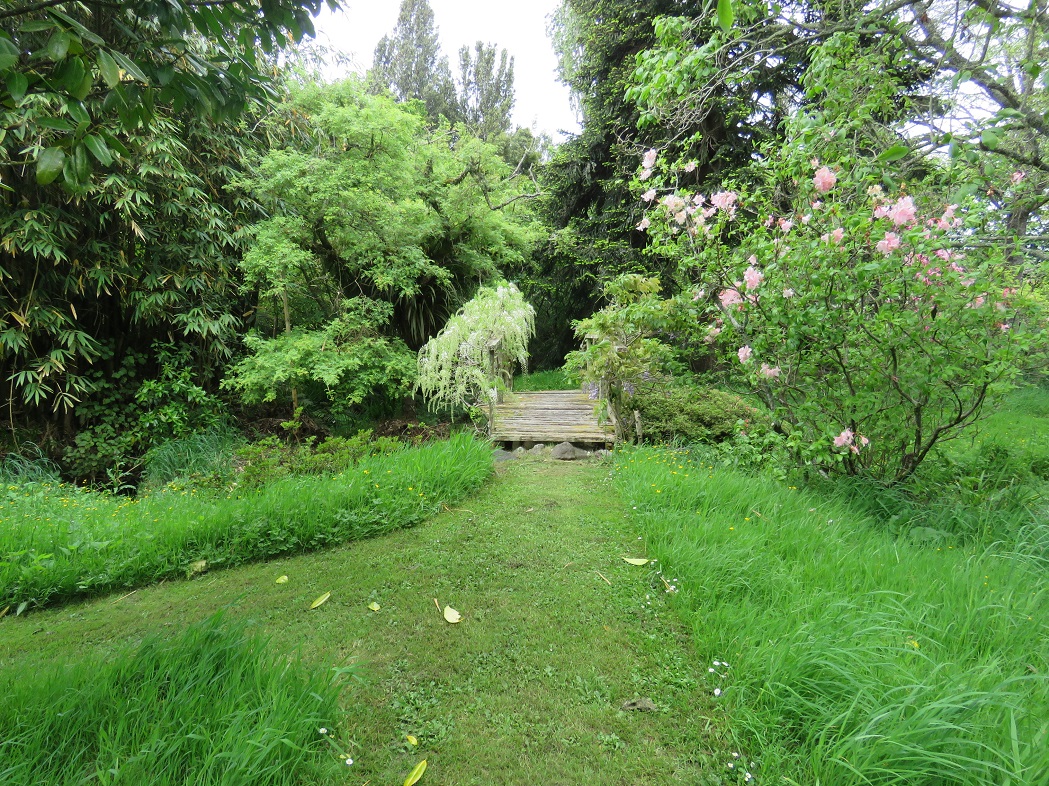
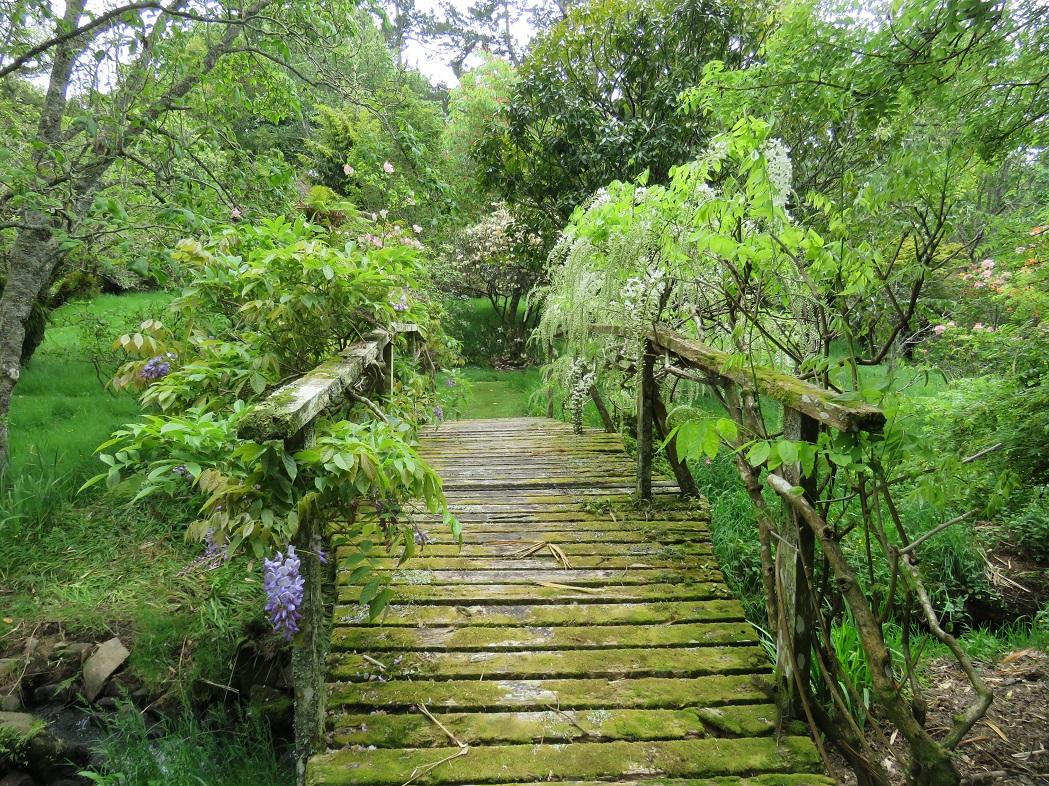 It is six years to the very day since we closed the garden to the public. And that means it is six years since we started to experiment with turning the park into a meadow. Up until that point, we mowed it all year – no easy task because it is undulating terrain across about four acres filled with specimen trees and shrubs and a stream. The areas that could not be mown – the stream banks and steepest gradients – were kept short with what we call a weedeater in New Zealand but many others know as a strimmer. It seemed important to maintain a similar level of control to that seen in public parks, even though this is a private garden.
It is six years to the very day since we closed the garden to the public. And that means it is six years since we started to experiment with turning the park into a meadow. Up until that point, we mowed it all year – no easy task because it is undulating terrain across about four acres filled with specimen trees and shrubs and a stream. The areas that could not be mown – the stream banks and steepest gradients – were kept short with what we call a weedeater in New Zealand but many others know as a strimmer. It seemed important to maintain a similar level of control to that seen in public parks, even though this is a private garden.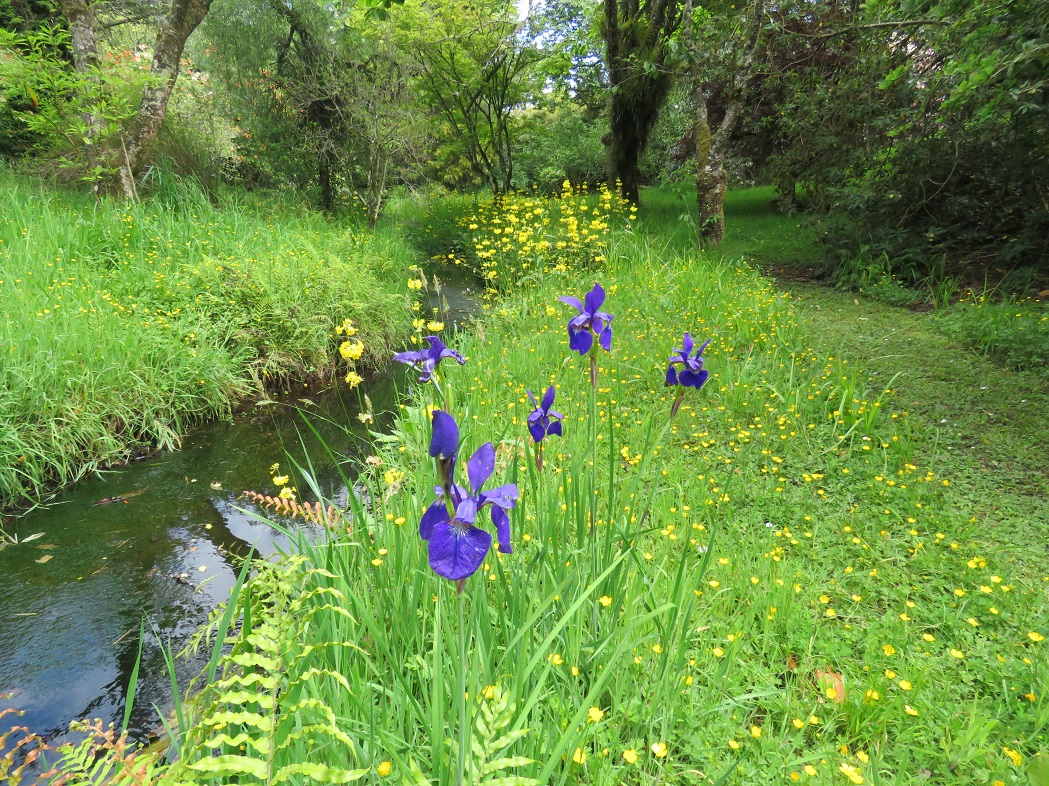
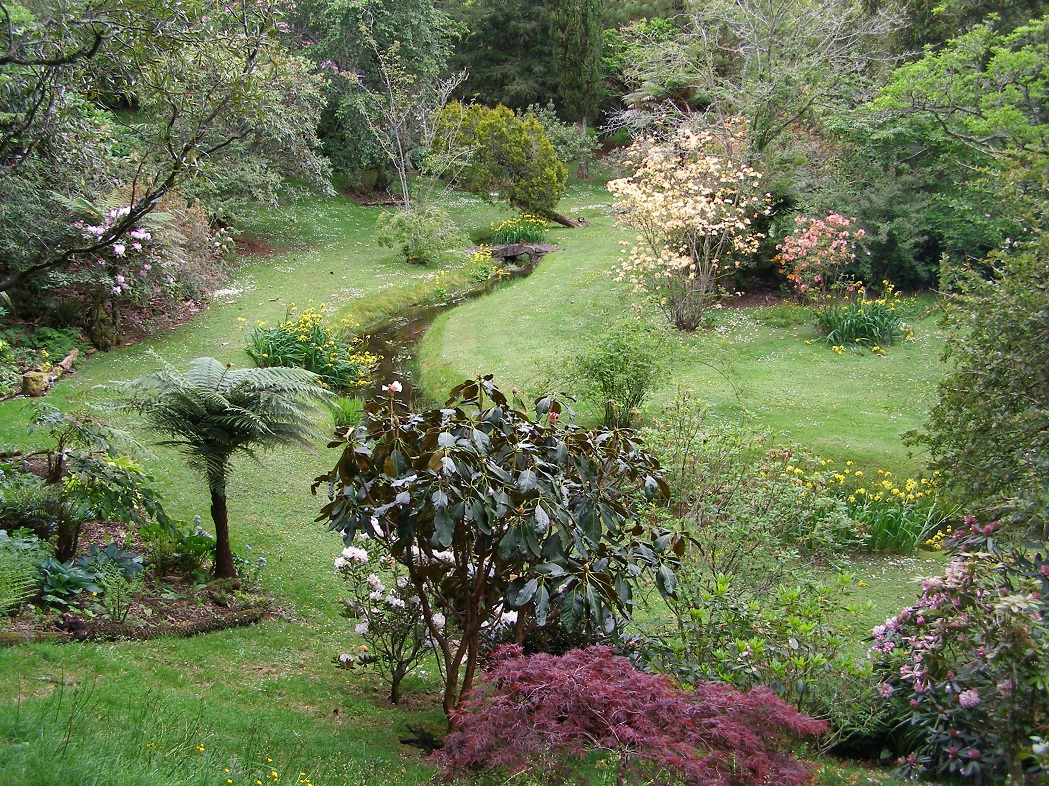
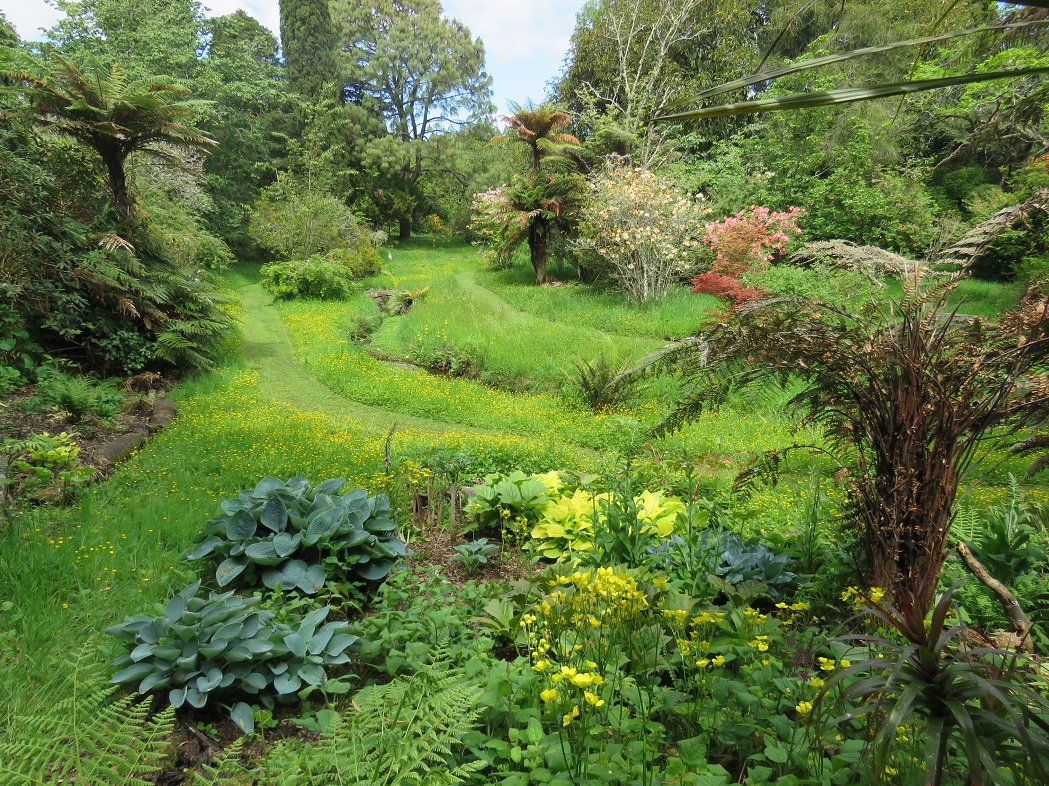

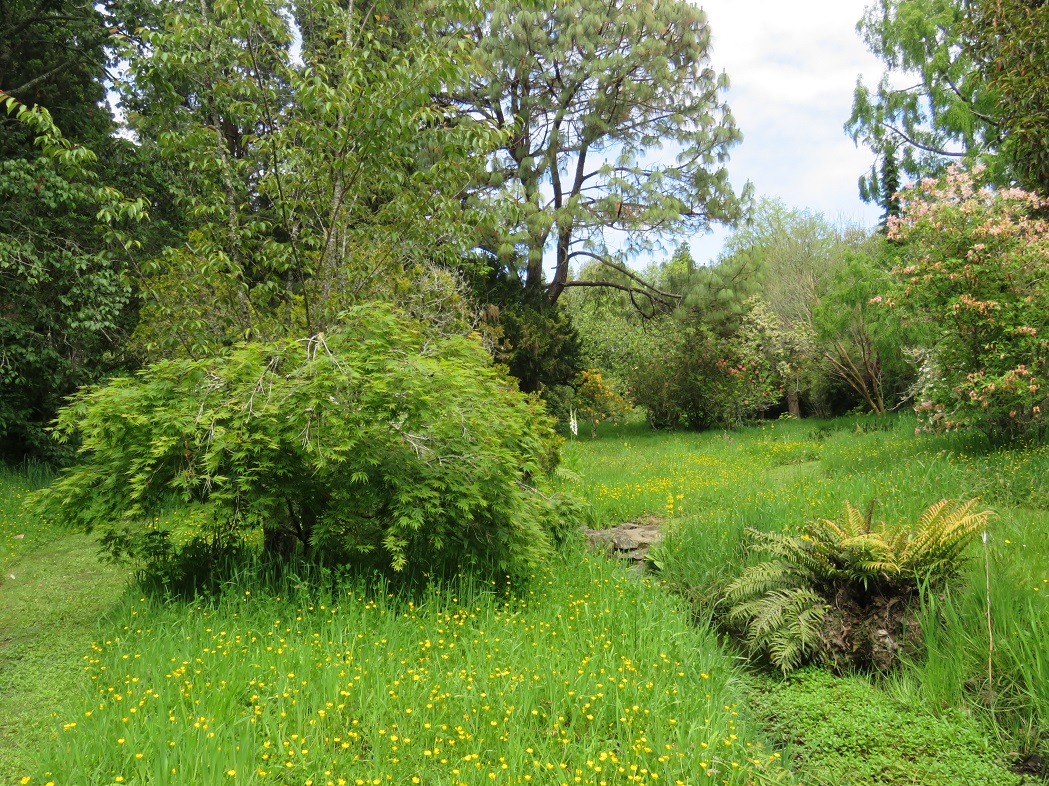
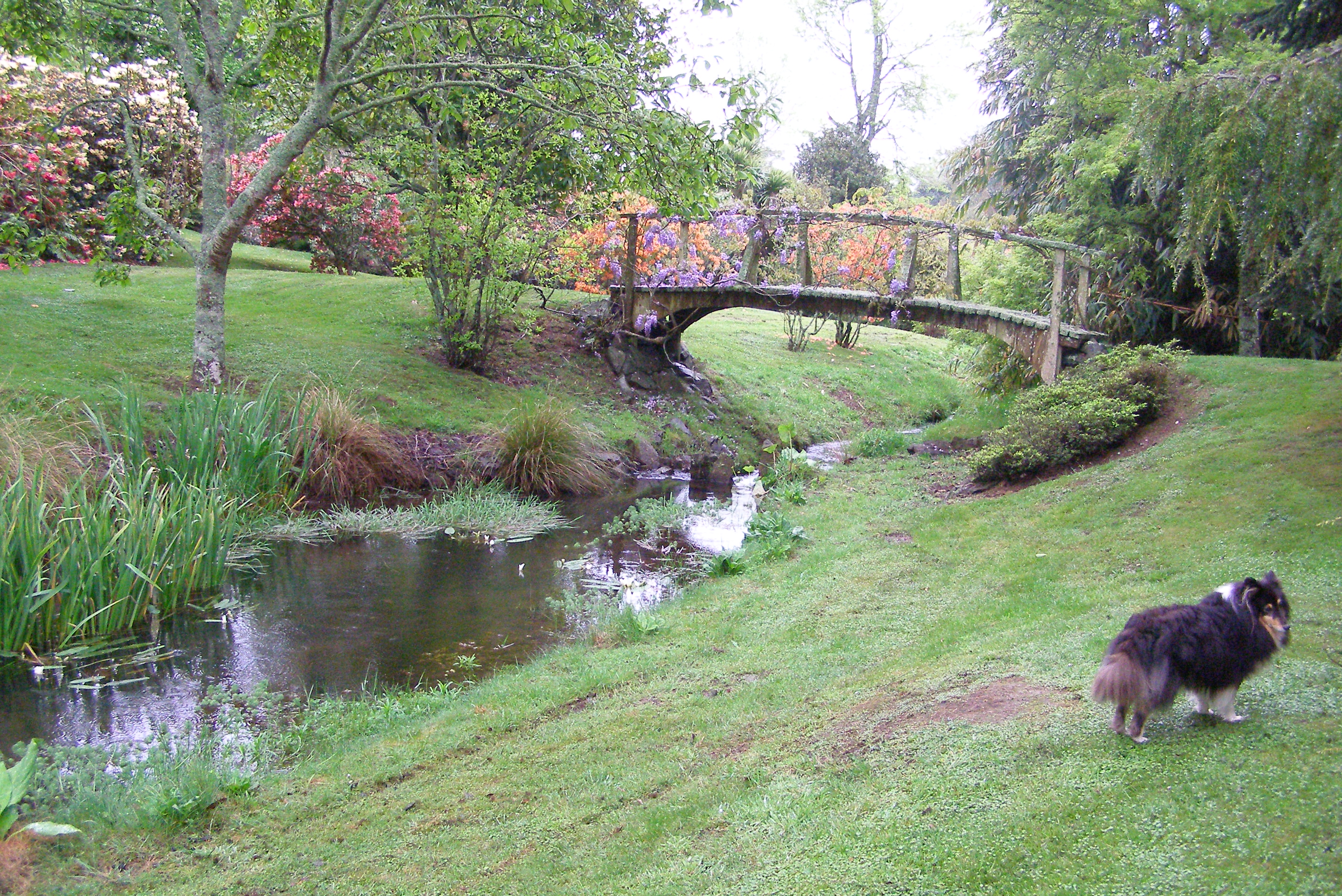
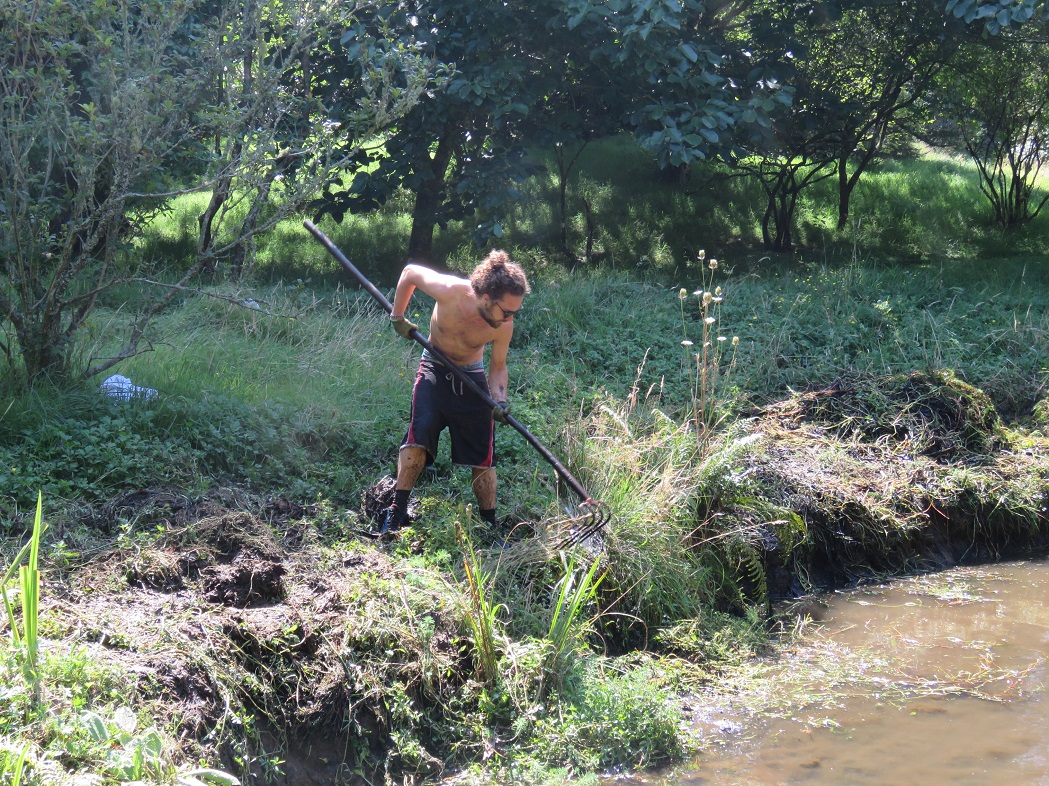
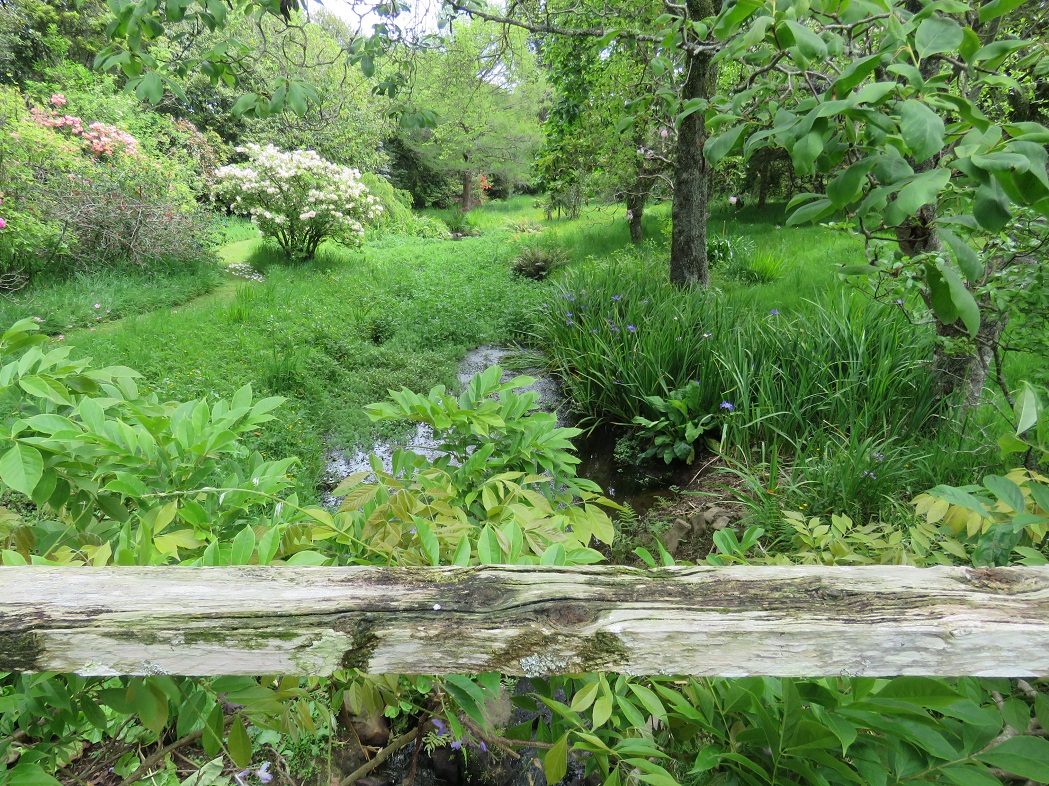
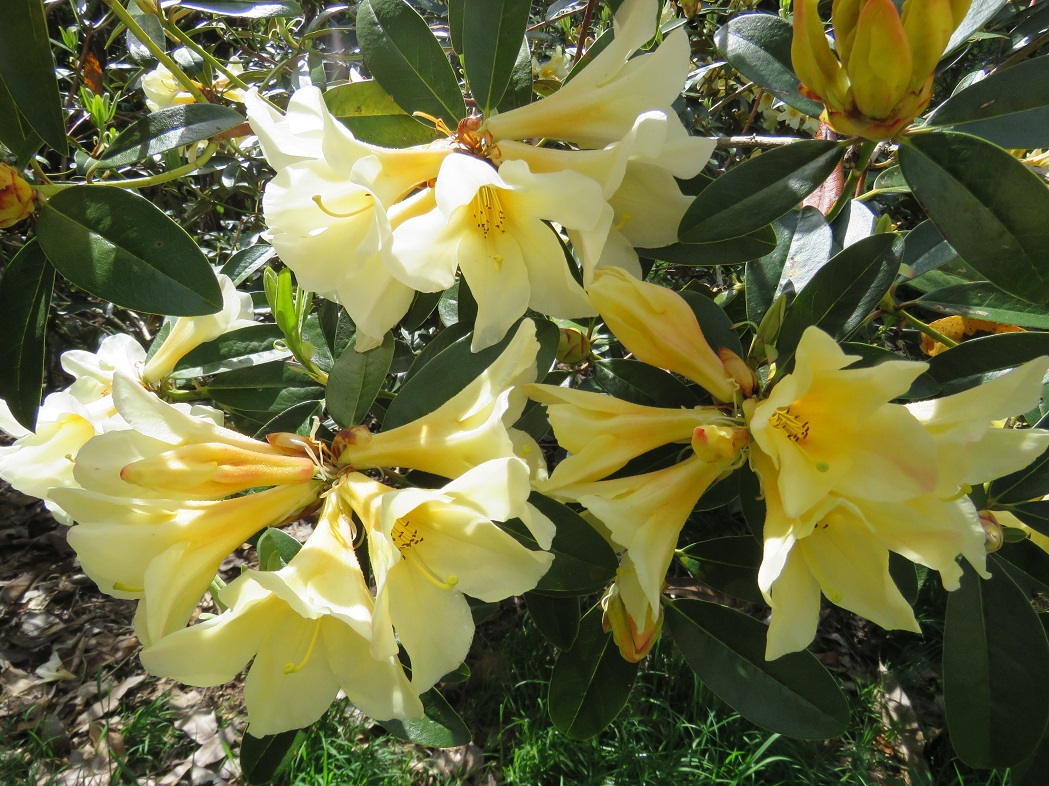
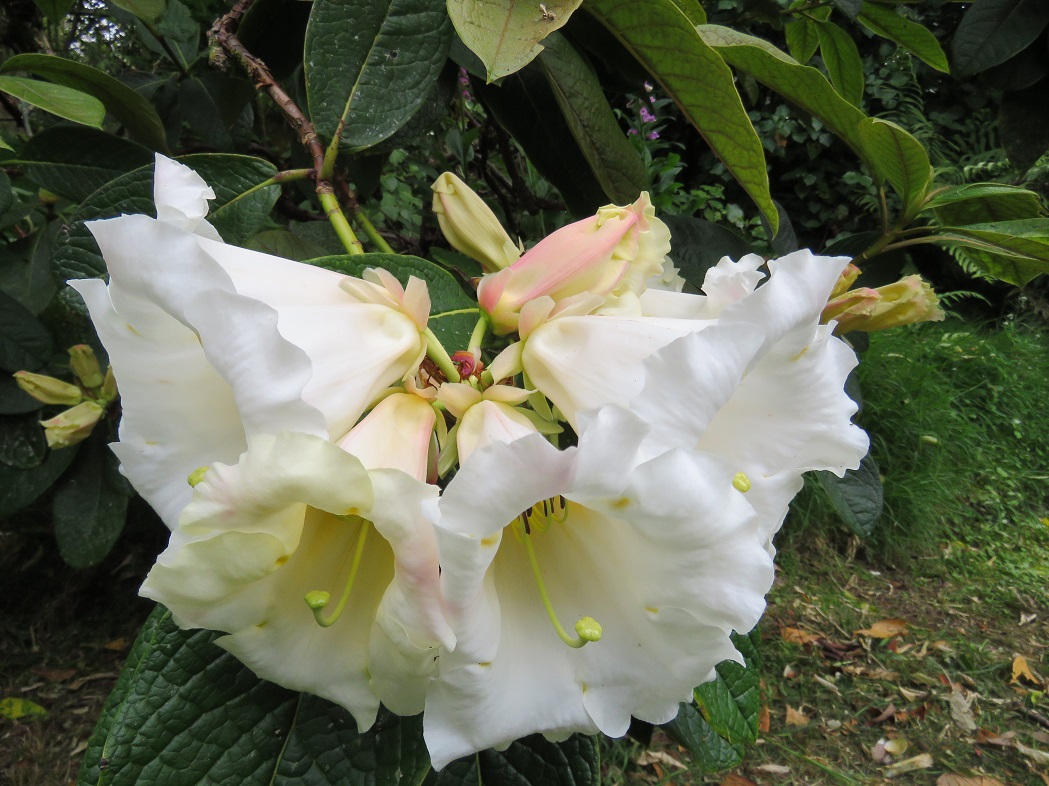
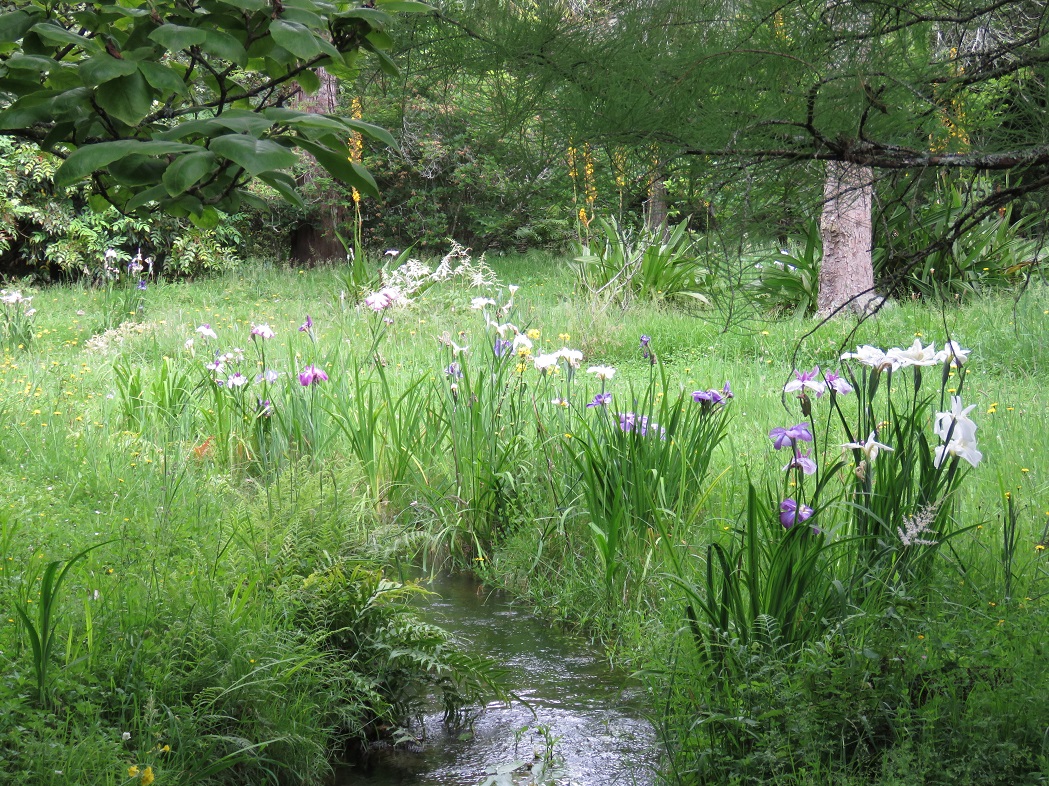
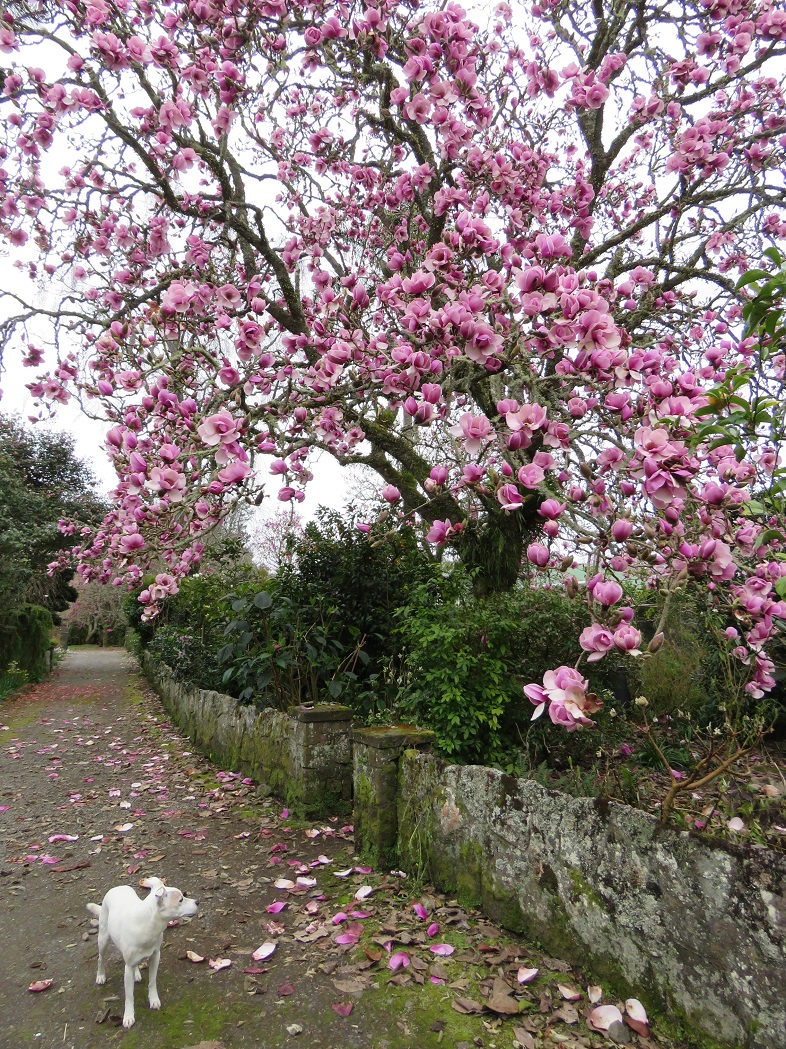

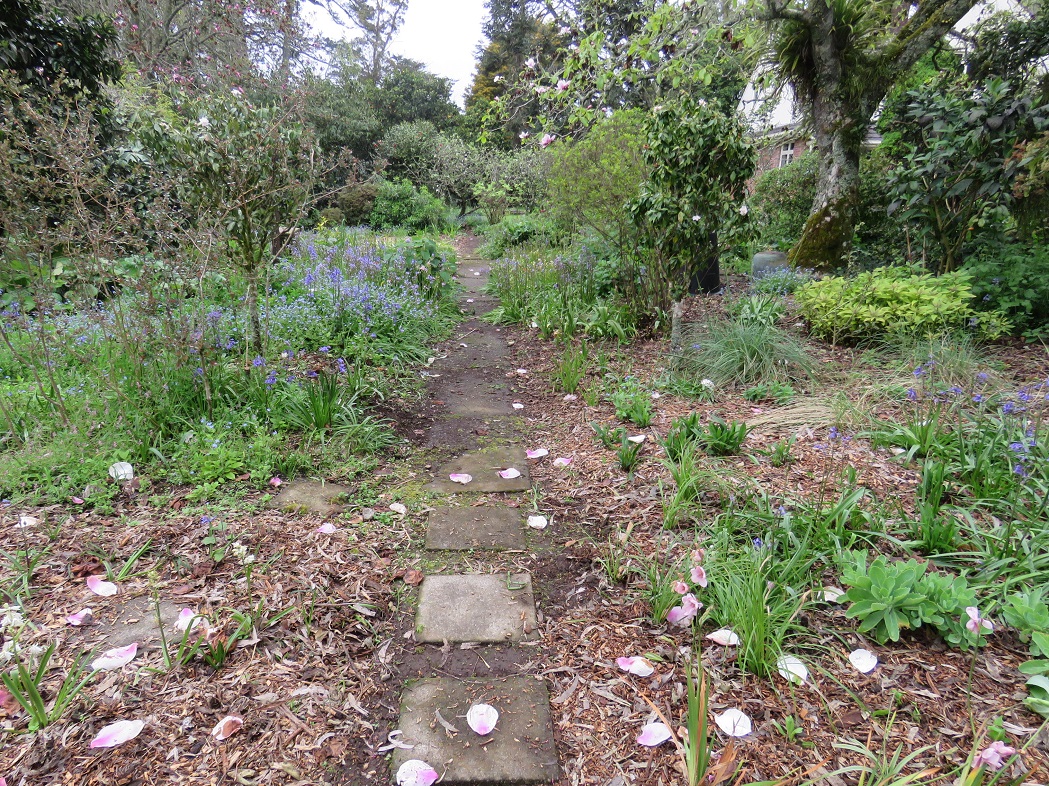
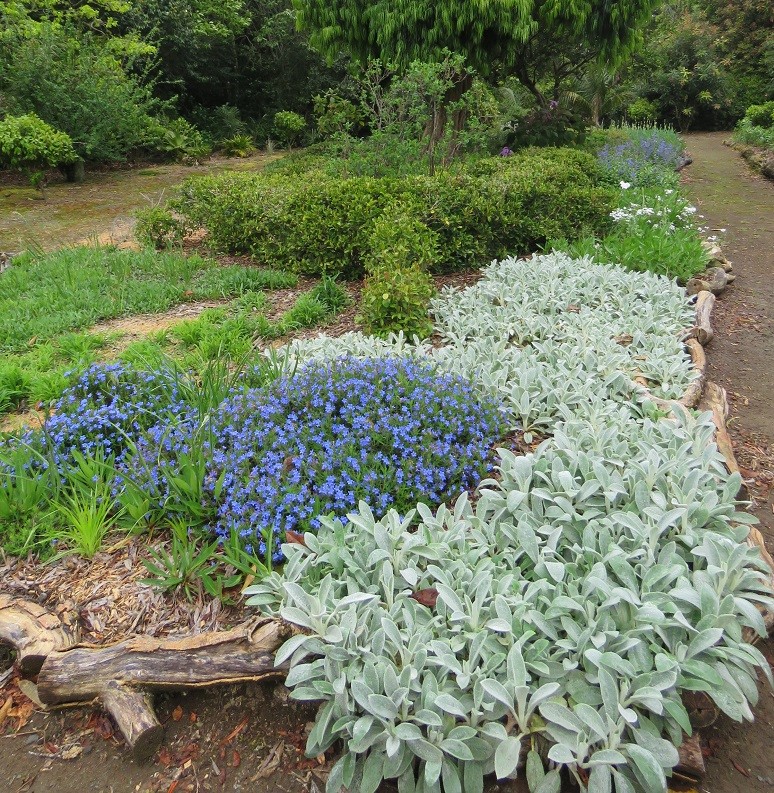
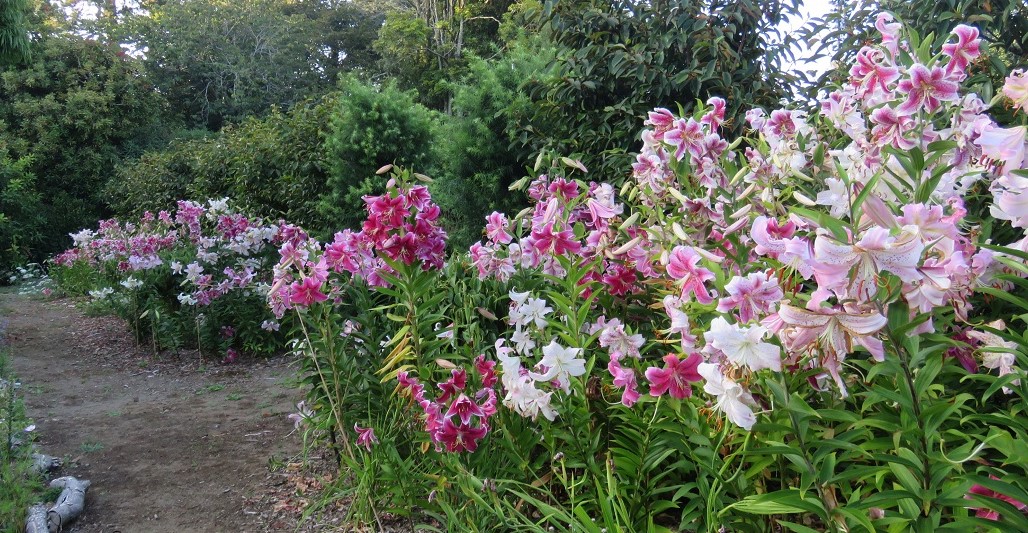
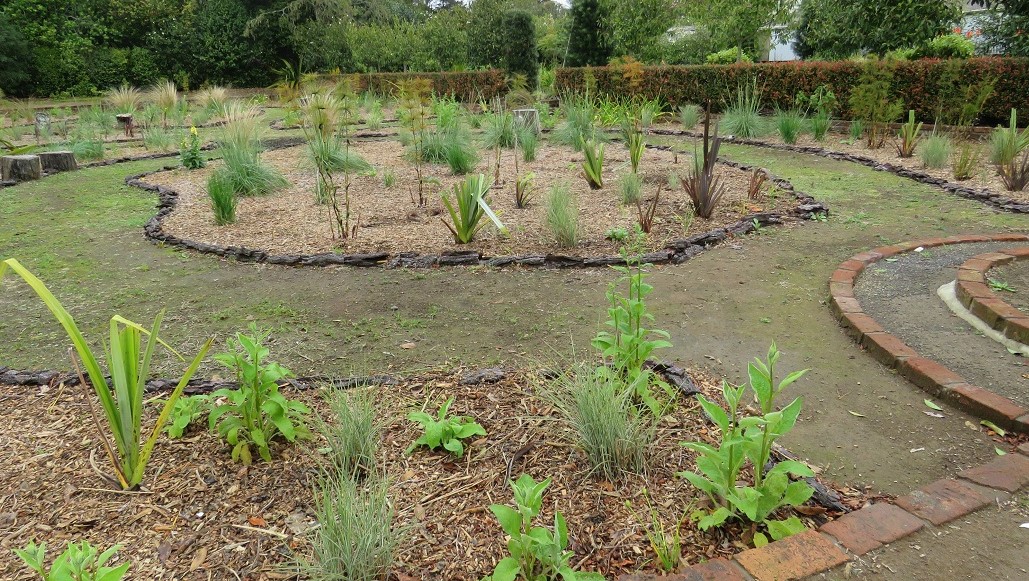

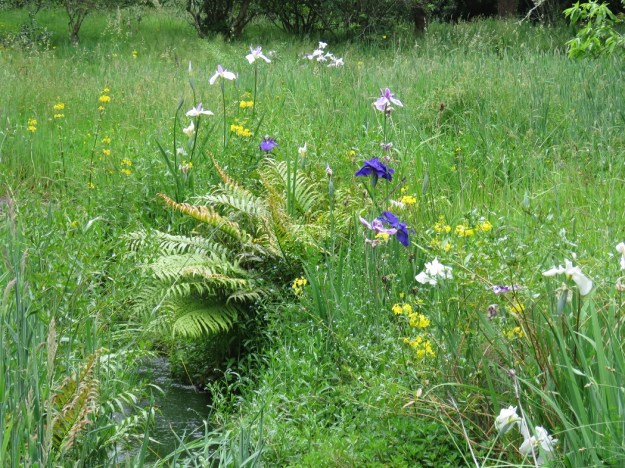 We are now entering our sixth year of managing our park as a meadow. Note the word ‘managing’. This is not just leaving it to its own devices but a much lighter touch than the previous mowing and weed control we used to practice. And in December, as in previous Decembers, my heart just fills with joy at the sight of the Higo iris in bloom. I love all times of the year in the garden – there is always something that delights me – but never more so than the iris meadow in the lead up to Christmas.
We are now entering our sixth year of managing our park as a meadow. Note the word ‘managing’. This is not just leaving it to its own devices but a much lighter touch than the previous mowing and weed control we used to practice. And in December, as in previous Decembers, my heart just fills with joy at the sight of the Higo iris in bloom. I love all times of the year in the garden – there is always something that delights me – but never more so than the iris meadow in the lead up to Christmas.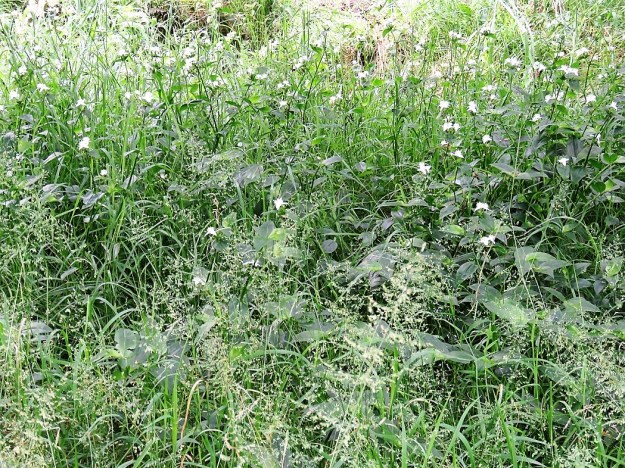
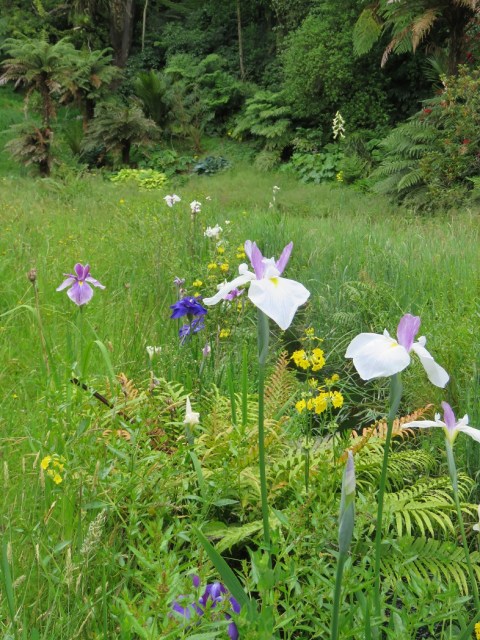 Having a stream flowing through brings responsibilities and these are weighing somewhat upon us. We worry that we are likely to be blamed for every escaped ornamental plant that establishes downstream, even if at least some are washed down from further upstream. The shiny leafed angelica, Angelica pachycarpa, somewhat more prized in overseas gardens but seen more as a weed here, has introduced itself from an upstream property. Don’t believe the
Having a stream flowing through brings responsibilities and these are weighing somewhat upon us. We worry that we are likely to be blamed for every escaped ornamental plant that establishes downstream, even if at least some are washed down from further upstream. The shiny leafed angelica, Angelica pachycarpa, somewhat more prized in overseas gardens but seen more as a weed here, has introduced itself from an upstream property. Don’t believe the 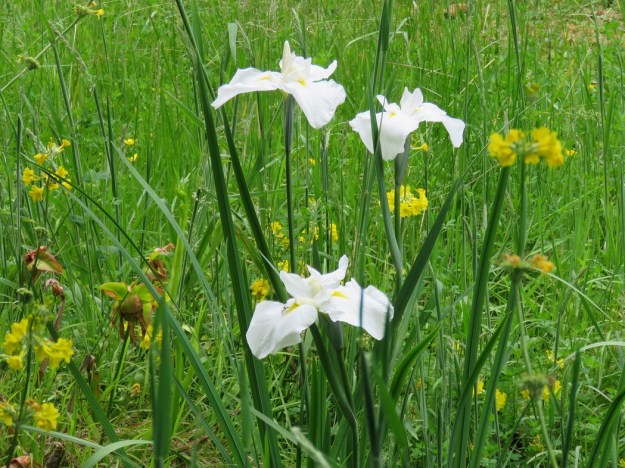 To be honest, we figure that if the beautiful Higo irises establish themselves downstream, that may not matter. They are no risk that we can see. We worry about the
To be honest, we figure that if the beautiful Higo irises establish themselves downstream, that may not matter. They are no risk that we can see. We worry about the 
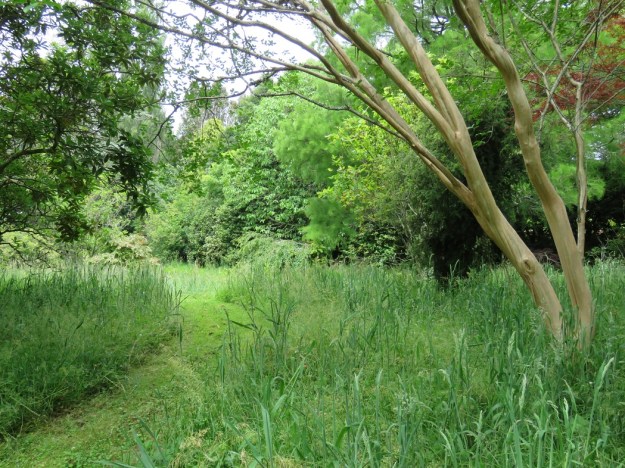
 Currently, I can be found in the afternoons down by the water, digging out the weedy carex and docks that are shooting up into flower, thinning the primulas and battling the wachendorfias. It is heavy work, sometimes muddy, but the setting is one to gladden my heart.
Currently, I can be found in the afternoons down by the water, digging out the weedy carex and docks that are shooting up into flower, thinning the primulas and battling the wachendorfias. It is heavy work, sometimes muddy, but the setting is one to gladden my heart.